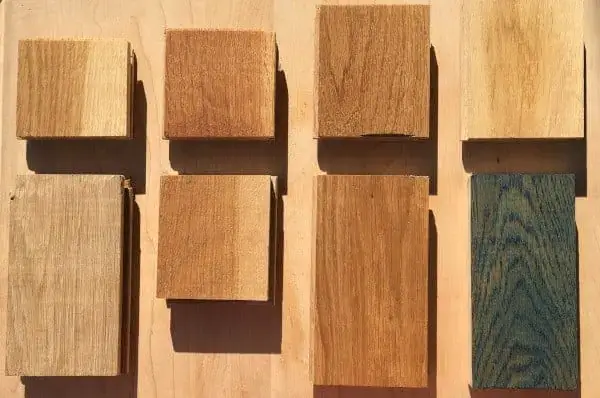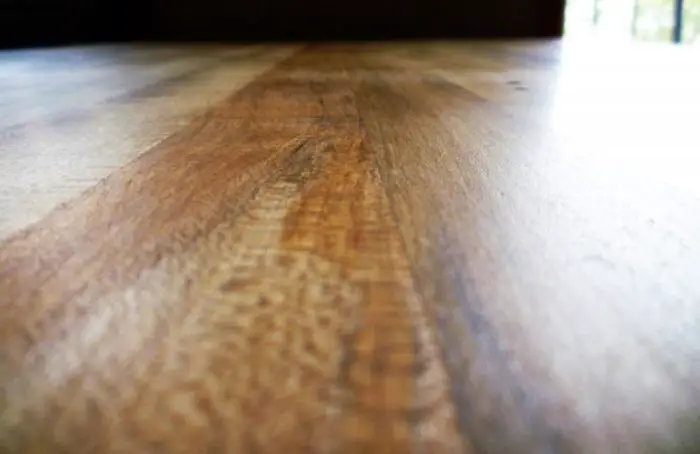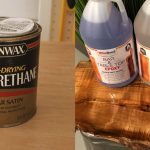Tung Oil Vs. Beeswax – What Are Their Differences & Similarities?
While there are many methods of finishing your wood, the most popular are tung oil and beeswax. This is because they are easy to apply, non-toxic, and 100% eco-friendly.
But what are the tung oil vs. beeswax differences? One of the differences between tung oil and beeswax is their origin. The finishes also differ in the time they take to dry, durability, and final look. Other differences are their affordability, penetration, and number of coats required to achieve a sleek appearance.
Want to know more? Read our tung oil vs. beeswax guide to also find out their similarities and which is the best.
What Are The Tung Oil Vs. Beeswax Differences

Tung oil and beeswax are both used as wood finishes. However, they have some differences, which we have summarized in the table below:
| Tung Oil | Beeswax | |
|---|---|---|
| Origin | Sourced from seeds of the tung tree | Derived from honeybees |
| Drying Time | 24 hours between coats | 20 minutes to 1 hour between coats |
| Durability | More durable and waterproof | Less durable due to heat damage |
| Final Look | A golden honey-colored finish | Shiny, glossy finish |
| Penetration | Requires more coats to penetrate deeply | Penetrates deeply into the wood with a few coats |
| Price | Expensive | More affordable |
Tung Oil Vs. Beeswax: Difference and Similarities
Now, let’s look at the differences and similarities between tung oil and beeswax in more detail.
1. Origin
Tung oil, also called China wood oil or wood oil, is a naturally drying oil obtained from the seeds of tung tree nuts. This oil is native to Southern China and several other Asian countries like India.
On the other hand, beeswax is a food-grade wax obtained from honeybees of the genus Apis and other bees. India is the top country known for producing beeswax in the world, followed by Ethiopia. In the EU, Spain, France, Germany, Greece, and Italy are the primary beeswax-producing countries.

2. Drying Time
Generally, it takes 24 hours for tung oil to dry between coats. And it takes about 4 to 7 coats to achieve a protective film on most wood surfaces. On the other hand, the oil can take about 3 to 4 days to cure well on the wood surface.
With beeswax, it can take 20 minutes to an hour to dry between coats. The drying time varies depending on the climate. Thus, it can be a little longer during a humid day. The number of coats to apply should be at least 3.
So, while tung oil usually dries faster than most other drying oils, beeswax has a quicker drying time. As such, it is less time-consuming to apply.
3. Durability
China wood oil is a hard, durable, heat, moisture, and water-resistant finish. It is also resistant to acids. So, if applied correctly, the oil will waterproof any wood surface, requiring reapplication once a year. This makes it ideal for outdoor projects.
Like tung oil, beeswax is also water and moisture-resistant. However, its waterproof properties are better than those of tung oil. Also, beeswax is vulnerable to heat damage compared to tung oil, making it less durable, especially for outdoor projects. Therefore, you must reapply the wax every 6 to 12 months.

4. Look
Once China wood oil has cured, it gives the wood a golden-honey-colored finish. This enables it to bring out the natural beauty in any wood grain. The best part is that it does not darken or turn yellow or rancid color over time like most finishes.
When beeswax is applied to wood, it gives it a rich, shiny, and glossy finish. Simply, the wax deepens the color of the wood, giving it a warm appearance and a nice glow. However, it may darken over time.
5. Penetration
Tung oil is more highly viscous than other typical vegetable oils, allowing it to penetrate the wood. However, it does not penetrate deeply into the wood. Therefore, depending on how porous the wood surface is, you may need to apply several coats.
Unlike tung oil, beeswax penetrates deep into most wood surfaces. This helps bring out the natural color of the wood. Because of its ease of penetration, it requires fewer coats than tung oil.
6. Price
Tung oil costs more to produce. As such, it is generally more expensive than most vegetable oils like linseed. Its durability and better waterproof properties also contribute to its high price.
On the other hand, beeswax is more readily available. In addition, it is easy to produce as it does not require chemical processing, UV stabilizers, or preservatives. Therefore, it is less expensive than tung oil.
Any Tung Oil Vs. Beeswax Similarities?
Besides the differences, tung oil and beeswax share some similarities. These include:
Non-Toxic
Tung oil is derived from the seeds of the tung tree. Therefore, it is non-toxic and food safe. It also does not contain volatile organic compounds (VOCs), making it eco-friendly.
Like tung oil, beeswax is also non-poisonous as it is directly sourced from nature. This makes it food-safe. It is also biodegradable, making it environmentally friendly.

Reapplication
To maintain their appearance and protective qualities, tung oil and beeswax must be reapplied at least once a year.
Water Resistant
Both finishes are formulated to provide a protective coating against water and moisture. Therefore, they can be used for indoor and outdoor woodworking projects.
Ease of Application
Applying tung oil or beeswax is easy and effective. You can use a soft and dry rag or a foam brush for both finishes. Even better, you can apply tung oil and beeswax to bare, finished, or painted wood.
Which is Better, Tung Oil Vs. Beeswax?
Overall, tung oil is considered the best because of the long-lasting protection it offers compared to beeswax. Not to mention, it has superior waterproof properties. And compared to beeswax, it does not darken over time.

However, if you are looking for a finish that will enhance the natural look of your wood, beeswax is a better choice. It is also an excellent option if you need an affordable finish that is easy to apply, eco-friendly, and food-safe.
If you’re contemplating the choice between tung oil and beeswax finishes for your woodworking project and need insights, our comparison guide on tung oil vs Danish oil could also help you understand the nuances between these finishes and their applications. Furthermore, if you have antique furniture and are looking for ways to clean it without stripping its charm, our guide on how to clean antique furniture without stripping might provide you with effective techniques to preserve its beauty. We understand the value of maintaining the authenticity of your woodworking projects and antique pieces, and our resources are designed to assist you in making informed choices.FAQs
In this section, we will look at frequently asked queries about tung oil vs beeswax.
Q: Can you mix tung oil with beeswax?
Yes, you can mix tung oil and beeswax in a 4:1 ratio and apply the finish over painted or bare wood surfaces. Alternatively, you can use the tung oil first and let it cure. Next, apply your beeswax as a protective finish.
Q: What are the disadvantages of tung oil vs beeswax?
Tung oil is costly and requires more coats to produce a good-looking satin finish. Also, it is more susceptible to scratches and requires a longer time to cure well. Conversely, beeswax is not very waterproof, can attract dust, prone to heat damage, and is difficult to remove.
Q: Is tung oil and beeswax a permanent finish?
Both finishes are designed to cure into a ‘permanent’ film. The reason permanent is in quotes is because the finishes usually wear way over time with use, exposure to sunlight, and cleaning. That is why they must be reapplied at least once a year.
Final Words
If you are torn between using tung oil vs. beeswax on your woodworking projects, knowing their differences is critical. It will help you choose the best finish for your projects. Generally, tung oil differs from beeswax in drying time, price, final look, durability, and penetration.
But even with their many differences, these two wood finishes have numerous similar features. For example, they are food-safe and non-toxic, water-resistant, easy to apply, and require touch-ups over time. With that said, tung oil is a better choice due to its durability despite being pricey.




